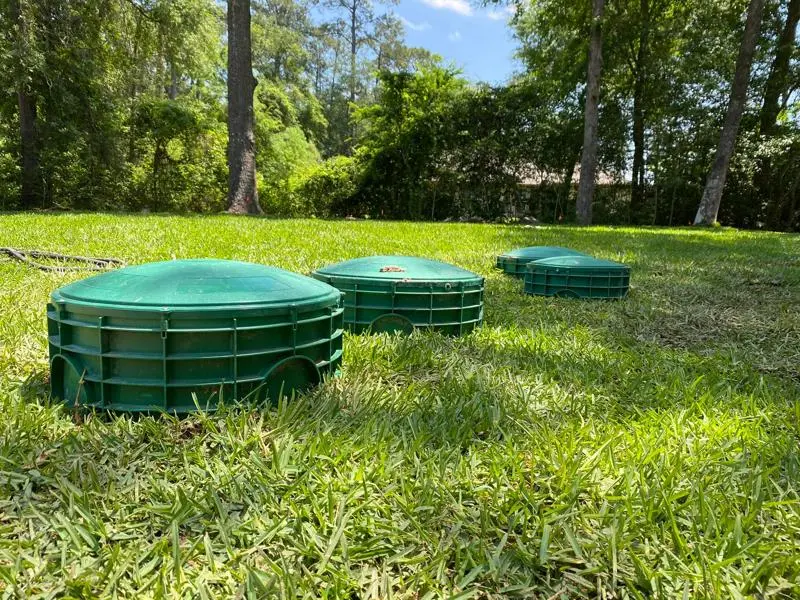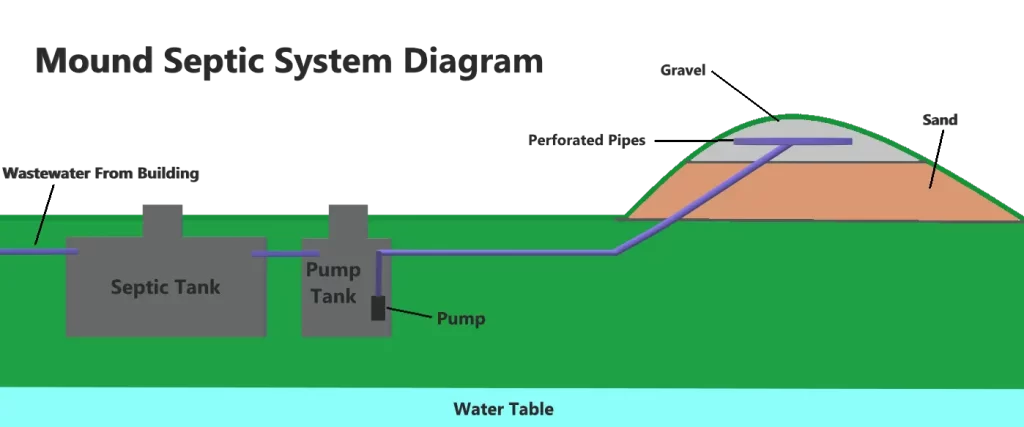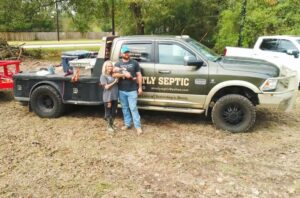When it comes to managing wastewater, choosing the right septic system is crucial for maintaining a healthy home and environment. At Strictly Septic, we understand that homeowners may feel overwhelmed by the options available, especially when it comes to understanding the differences between mound septic systems and aerobic septic systems. This article will explore the characteristics, advantages, and disadvantages of each system to help you make an informed decision.
Understanding Septic Systems
Before diving into the specifics of mound and aerobic systems, let’s briefly explain what a septic system is. A septic system is an underground wastewater treatment structure that relies on natural processes to treat and dispose of sewage from your home. The system typically consists of a septic tank and a drainage field (or leach field).
Key Components of a Septic System
- Septic Tank: This is where solid waste settles at the bottom and undergoes anaerobic digestion. Liquids flow out into the drainage field.
- Drainage Field: Also known as a leach field, this is where treated effluent is dispersed into the soil, allowing for further treatment by natural processes.
- Soil: The soil plays a crucial role in filtering and treating wastewater as it percolates through the ground.
Mound Septic Systems

What is a Mound Septic System?
A mound septic system is an alternative type of wastewater treatment system that is elevated above the natural ground level. This type of system is typically used in areas with poor soil conditions or high water tables, where traditional systems may not function effectively.
Components of a Mound System
- Mound: The mound is constructed using clean sand or gravel and is designed to hold and distribute effluent evenly over a large area.
- Distribution System: Pipes are laid in the mound to distribute the effluent evenly.
- Septic Tank: Like conventional systems, mound systems have a septic tank for preliminary treatment.
Advantages of Mound Septic Systems
- Effective in Poor Soil Conditions: Mound systems are specifically designed for areas where traditional septic systems would fail due to high groundwater or poor drainage.
- Space-Efficient: They can be constructed in smaller areas, making them suitable for properties with limited space.
- Reduced Risk of Contamination: By being elevated, mound systems are less likely to contaminate nearby water sources.
Disadvantages of Mound Septic Systems
- Higher Installation Costs: The construction of a mound system can be more expensive than traditional systems due to the need for additional materials and labor.
- Maintenance Requirements: Mound systems require regular maintenance and monitoring to ensure they function properly.
- Aesthetics: Some homeowners may find the visible mound unattractive.
For more details on mound septic systems, check out our Mound Septic Systems page.
Aerobic Septic Systems

What is an Aerobic Septic System?
An aerobic septic system utilizes oxygen to enhance the breakdown of waste. These systems are equipped with an aerator that introduces air into the treatment tank, promoting the growth of aerobic bacteria that help break down organic matter.
Components of an Aerobic System
- Aeration Chamber: This chamber is where the aerator introduces air to promote aerobic digestion.
- Clarification Chamber: After the aeration process, the effluent moves to this chamber for further settling before being discharged into the drain field.
- Drainage Field: Similar to conventional systems, the treated effluent is dispersed into the soil.
Advantages of Aerobic Septic Systems
- Better Waste Treatment: Aerobic systems tend to treat wastewater more effectively than anaerobic systems, resulting in cleaner effluent.
- Smaller Footprint: These systems generally require less land area compared to mound systems, making them suitable for smaller properties.
- Flexible Installation: Aerobic systems can be installed in a wider variety of soil types, including those with a high water table.
Disadvantages of Aerobic Septic Systems
- Higher Operational Costs: Aerobic systems require electricity to run the aerator, which can lead to higher utility bills.
- Regular Maintenance Required: These systems need more frequent inspections and maintenance than traditional septic systems.
- Complexity: Aerobic systems are more complex and may require more specialized knowledge for installation and repair.
For additional information on aerobic septic systems, visit our Aerobic Septic System page.
Comparing Mound and Aerobic Septic Systems
Performance and Treatment
- Mound Systems: Effective for treating wastewater in areas with poor soil drainage, but may not achieve the same level of treatment as aerobic systems.
- Aerobic Systems: Generally provide better treatment of wastewater, leading to cleaner effluent and reduced environmental impact.
Cost Considerations
- Installation: Mound systems may have higher upfront installation costs due to the need for additional materials and construction. Aerobic systems can also be costly, but they may offer savings in land area requirements.
- Maintenance: Both systems require regular maintenance, but aerobic systems tend to have higher operational costs due to electricity needs.
Space Requirements
- Mound Systems: Require more land area for construction, making them less suitable for smaller lots.
- Aerobic Systems: Generally have a smaller footprint and can fit into tighter spaces.
Environmental Impact
- Mound Systems: Help reduce contamination risk by elevating the system, but their effectiveness depends on proper construction and maintenance.
- Aerobic Systems: Often result in cleaner effluent, which can have a positive impact on surrounding groundwater and soil quality.
Making the Right Choice
When deciding between a mound septic system and an aerobic septic system, several factors should be considered:
- Soil Conditions: Evaluate your property’s soil type and drainage capabilities. If you have poor soil conditions, a mound system may be the best option.
- Budget: Assess your budget for installation and ongoing maintenance costs. Aerobic systems might save money on land but could increase utility bills.
- Space Availability: Consider the size of your lot and local zoning regulations that may influence your choice.
- Environmental Considerations: Think about the potential impact on your property’s environment and choose a system that minimizes contamination risk.
Conclusion
Choosing the right septic system is a critical decision that impacts your home, the environment, and your wallet. Mound septic systems and aerobic septic systems each have unique advantages and disadvantages that should be carefully evaluated. At Strictly Septic, we are committed to helping you find the best solution for your needs.
If you need further assistance or would like to discuss your options, please reach out to us. Our team of experts is ready to provide personalized advice and support.
For more information on septic systems, visit us at Strictly Septic.









































